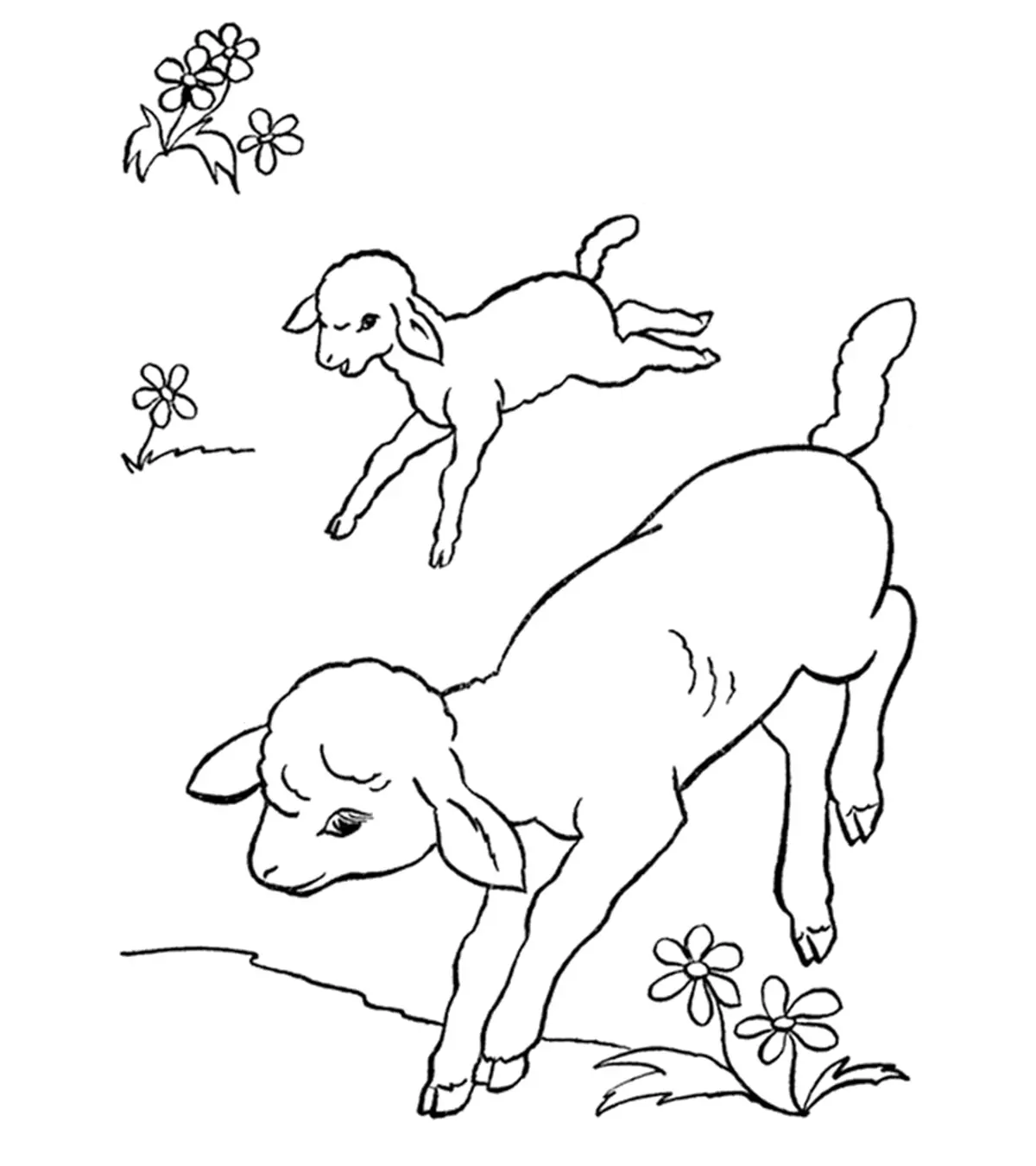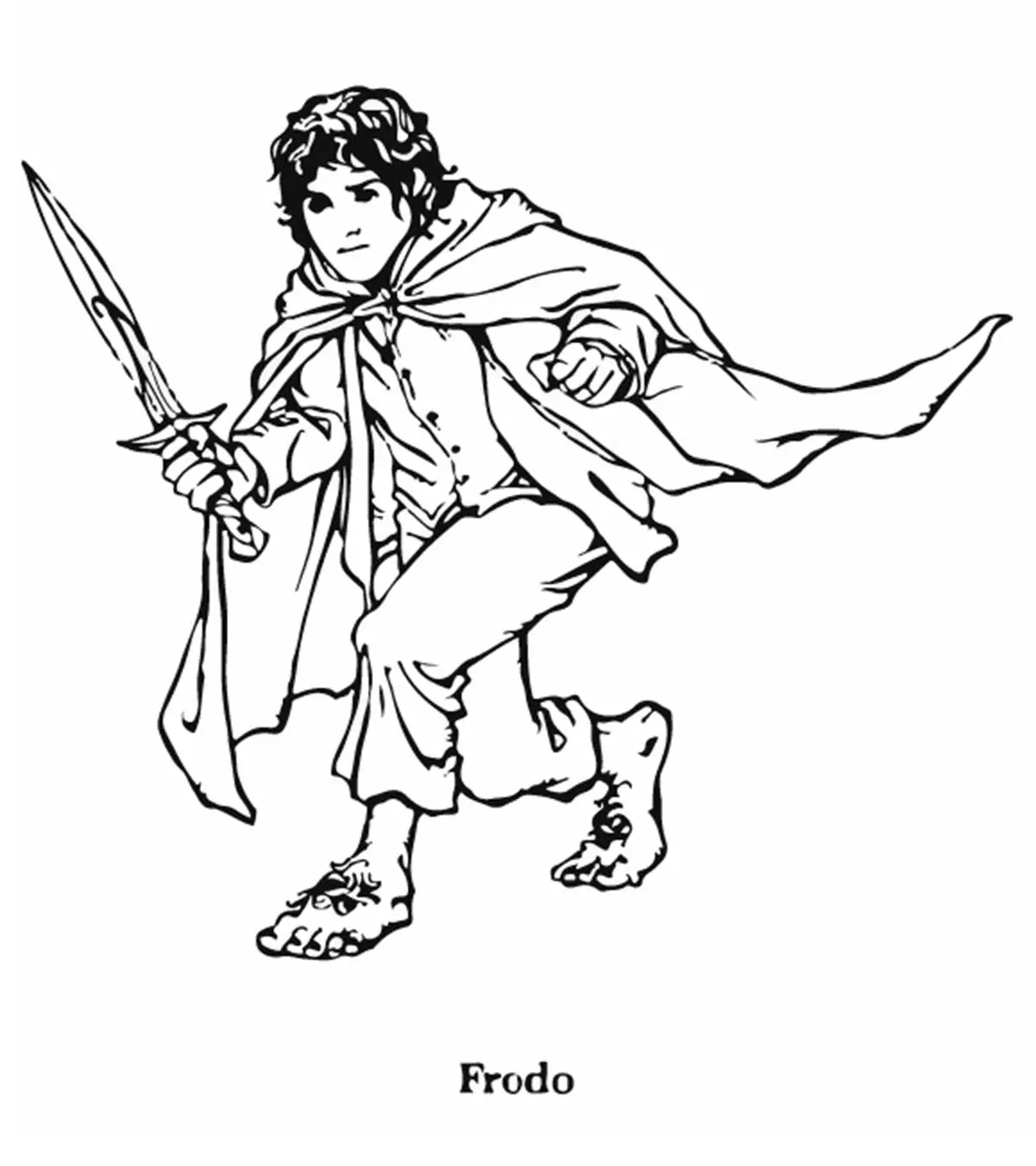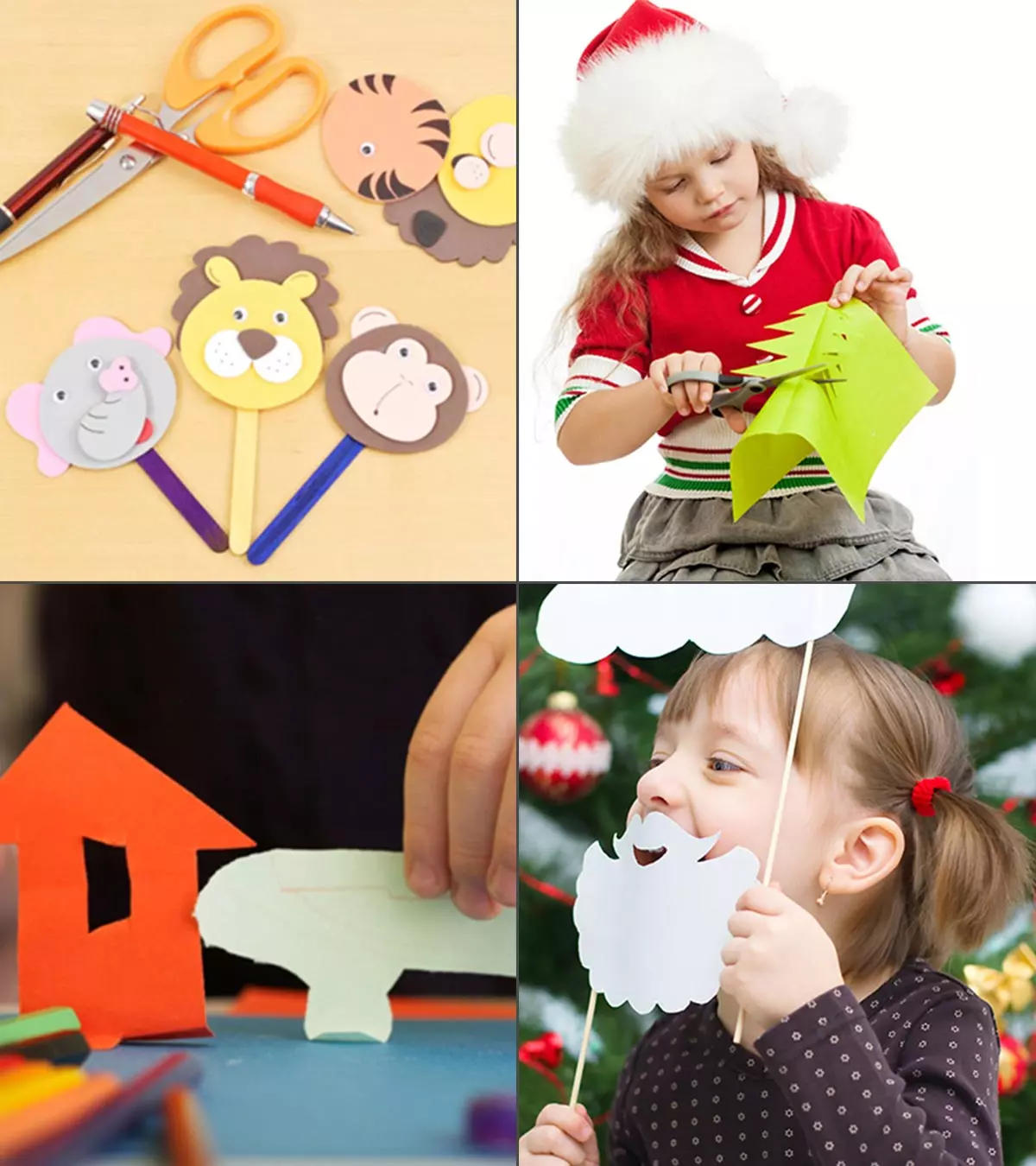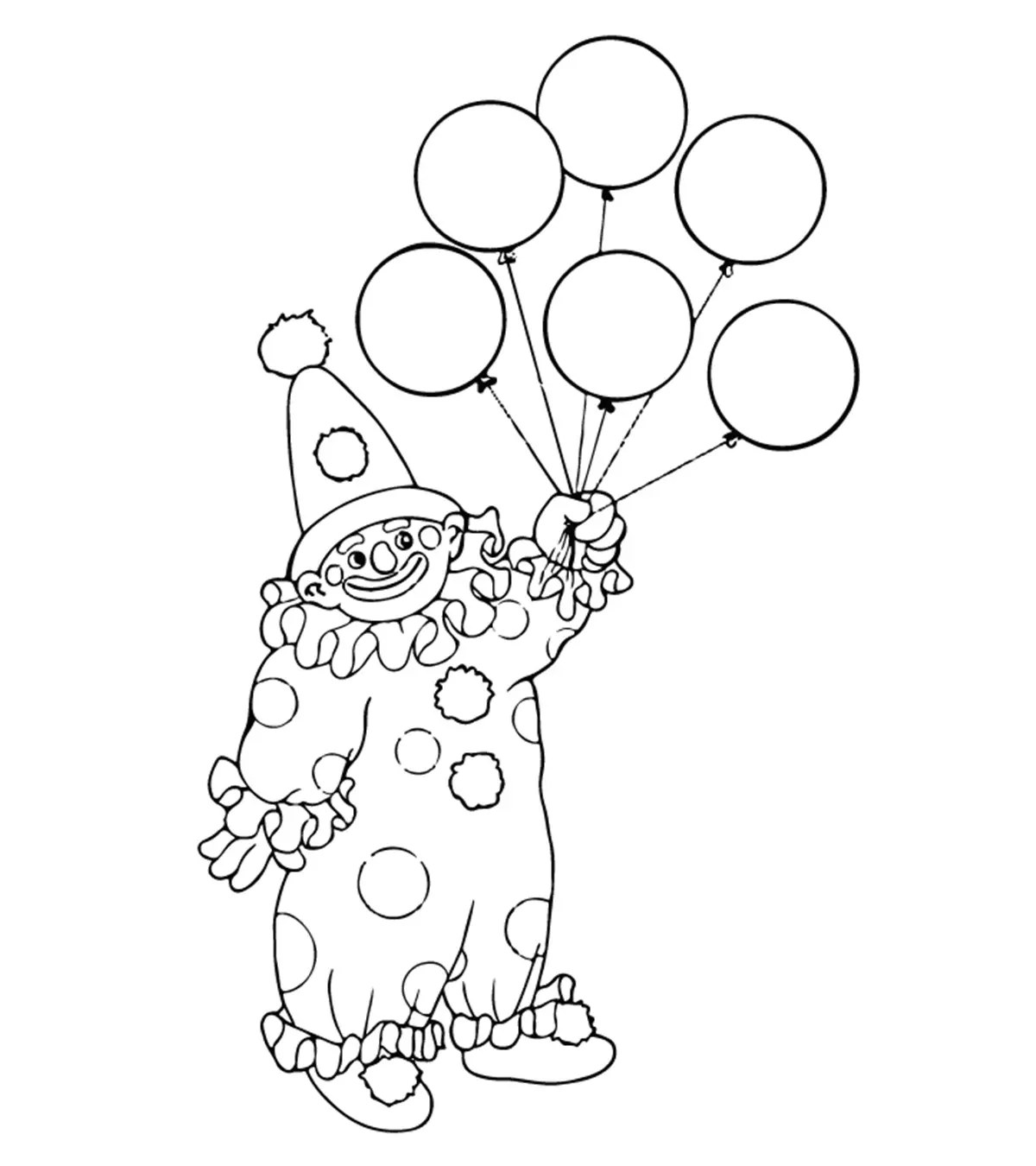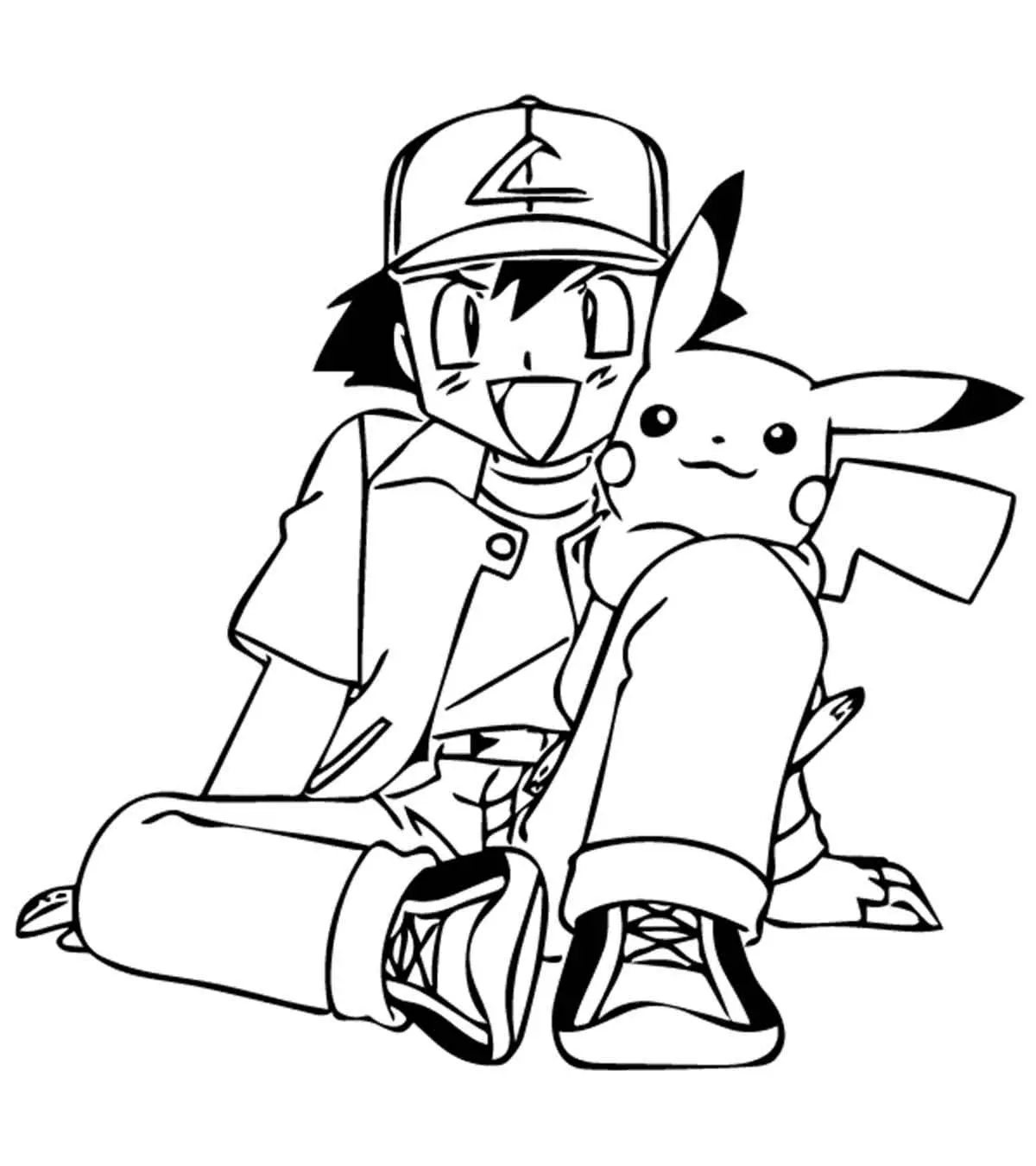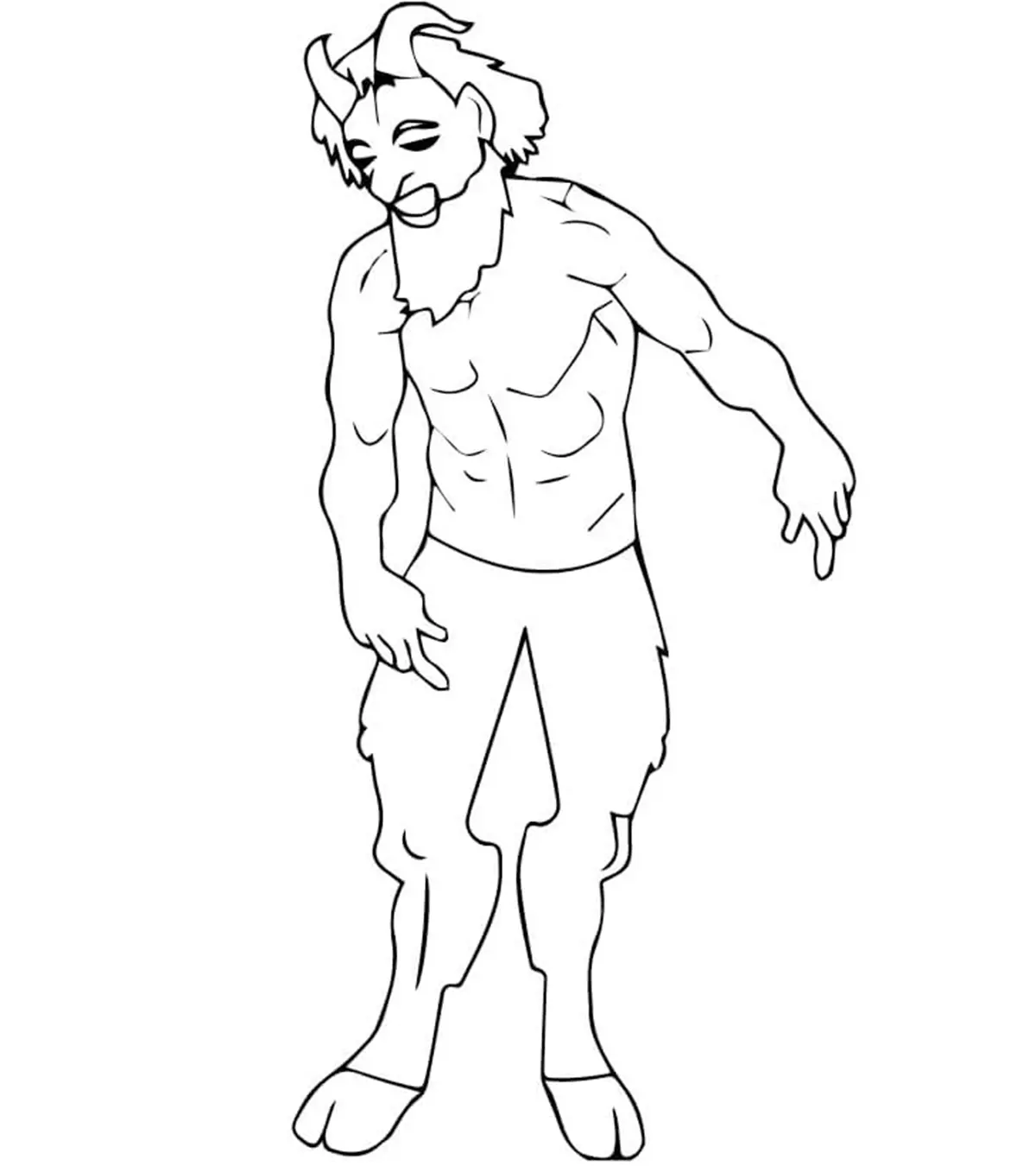
Image: Shutterstock
Anger is a universal emotion that all kids experience, just like adults. Learning to understand it is an important step in their emotional development. Since children cannot understand or express it quite well, they may have anger outbursts or meltdowns. However, anger management activities for kids can help them deal with their anger differently, more healthily, and productively.
Understand that anger is a form of communication, which often arises when a child’s needs are not met, or someone hurts them. Therefore, it is a misconception that anger is destructive and should be aimagery and visualization techniques can help your child relax and better cope witvoided or vent out on others. Hiding or venting out anger in incorrect ways may become destructive to self and others (1). Learning to manage anger can create self-awareness, confidence, and peace of mind (2). The following post gives you some anger management activities for children to help you discipline them in the right way.
Key Pointers
- Children may struggle to understand and express their anger, leading to outbursts.
- Anger management exercises help children learn to cope with emotions in a healthy way.
- Drawing, role-playing, deep breathing, avoiding triggers, and calmness rewards are some anger management exercises for children.
- Positive reinforcement can strengthen the parent-child relationship and build trust.
- Practicing anger management techniques with children can lead to improved emotional regulation and better communication.
17 Anger Management Activities For Kids
- Practice deep breathing: Teaching deep breathing to your children can help them control their anger. Breathing slowly and deeply would calm the nervous system (3). They should understand that when someone gets angry, their heartbeat increases, but as they breathe deeply, it slows down. Ask them to place their hands on their heart and feel the beat. This is also important in teaching self-regulation strategies. You may also introduce breathing games, such as (4):

Image: IStock
- Hot chocolate breathing, where they can imagine holding a cup of hot chocolate in their hands. They breathe deeply to take the aroma and then blow out to cool it down for drinking. Children can do a count of five and regularly for practice.
- Teddy bear breathing, where you can place a teddy bear on their belly and give it a fun ride through the rise and fall of their breath. Children can practice this when they are lying down to sleep.
- Blowing birthday candles breathing, where children are supposed to take a deep breath, bring up a happy thought, and pretend to exhale and blow their birthday candles.
- Ocean breathing involves closing your eyes along with your child’s and imagining anger as a fire on a shore. They imagine the ocean waves coming closer and extinguishing the fire as they breathe through their diaphragm.
- Encourage roleplay: Role-playing helps children express their emotions better. As they play a character in the roleplay, they learn from how the character dealt with a difficult situation. For example, when upset or angry, let them pretend to be a turtle. Allow them to pretend to go inside the shell by covering their heads with arms and staying there until they calm down. This practice will allow children to calm themselves till their anger subsides (4). If you involve children in role plays regularly, they will become more imaginative and communicative and understand how to talk about their emotions through words (5).
- Create a calm corner: Calm corners are specified places at home or school that children may use to calm themselves when they get angry or upset. These corners focus on bringing mindfulness and peace to children. You can place a soft rug, blankets, favorite books, and soft toys in these corners. Also, add children’s artwork, family photos, and thoughtful quotes for inspiration, if any. Let your children sit here and reflect on the situation before responding. Do not treat calm down corners as time-out zones because children should not associate them with punishment. Instead, be positive and encourage them to spend time in those corners when they are distressed (6). You can even teach them the approach of positive thinking to divert their mind off of their anger.
- Draw a picture: Some children may not be able to express themselves through words but can draw out their emotions. Drawing helps them to calm down and relax. If your children love to draw, encourage them to use it as an activity to manage their anger. It also gives them the creative freedom to express things they are thinking or feeling that they otherwise wouldn’t be able to verbalize. Art therapy can help with improving your little one’s mental well-being.
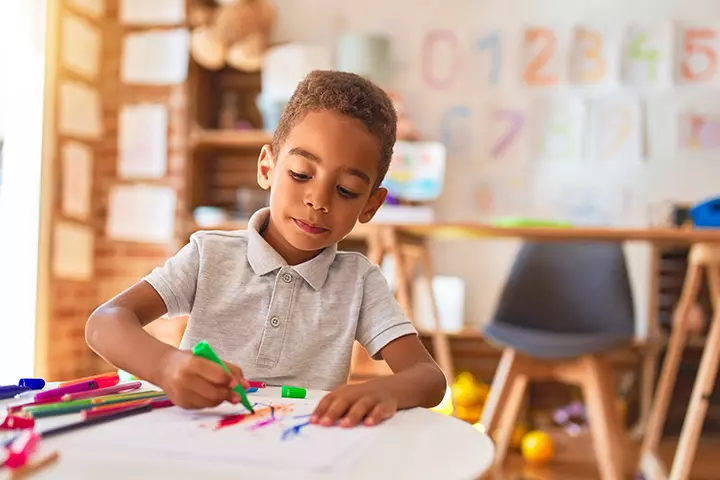
Image: IStock
- Identify triggers and avoid them: Many children become angry or upset when asked to do something they do not like or stop doing something they like. For example, they may get angry if you ask them to switch off the television, stop playing, or do their homework. You may identify these triggers and avoid a meltdown by providing time warnings, preparing them for the situation, or breaking the process into steps. So, if you want children to switch off the television, you may tell them that they only have ten more minutes to watch their show. Conflict resolutions like time warnings will help prepare and avoid sudden outbursts of anger (7).
- Give calmness rewards: When children practice anger management skills and start getting better at them, you should recognize their efforts and reward them. Every time they make an effort to manage their anger, give them a point. You can convert these points into rewards–could be an extra screen time, a toy, or a trip to the park (1). Anger management is challenging for people of all ages, so your children deserve the credit if they use the tools to release anger positively.
 Quick tip
Quick tip- Use an anger journal: Journaling or writing down angry thoughts and emotions may help children clear their minds. It also helps them understand a situation better, reflect on what has happened, and look at the scenario differently. It especially helps as a self-reflection tool to look back at later. You may find that children are calmer and more controlled after penning down their feelings (2).
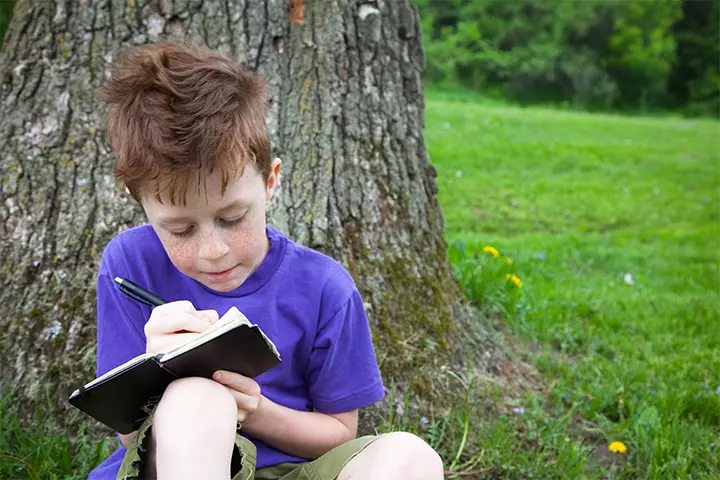
Image: IStock
- Build a feelings vocabulary: Although fluent in talking, many children cannot express their angry emotions. They do not have the proper vocabulary to express their feelings. Therefore, it is essential to introduce emotional vocabulary, including furious, angry, irritated, frustrated, and nervous. Once they learn these words, they will have better communication skills to express their anger rather than hiding it or venting it out in an inappropriate way.
- Introduce 1+3+10 activity: Teach children the formula for staying calm whenever they feel angry. Step one is stopping and reminding themselves to stay calm. Then, they should take three slow and deep breaths. After that, they should count to ten. Doing the 1+3+10 activity at a stretch will help them become calm and control their anger. This can be considered as a form of meditation for your little one.
- Try relaxation techniques: Relaxation techniques can help children calm down more quickly when they experience anger. Teach your child to:
- Take a few deep breaths.
- Start relaxing the muscle groups one by one–from the forehead to the jaws, neck, etc. Relax the entire body.
- Get into a calming or relaxing imagination (8).
- Include distracting activities: Distraction is a good way to take children’s attention off the anger. For younger children, try blowing bubbles. Initially, you can use soap solution and a wand to blow real bubbles. As children understand the concept, they can even pretend to blow bubbles as a calming technique. For older children, taking a walk outdoors, music therapy, cycling, exercise, and yoga may help them distract from anger (8).
 Point to consider
Point to consider
Image: IStock
- Play emotion charades: Playing this game with family members may help children differentiate between different emotions. Have fun acting out different emotions and actions, and let your child guess. Show them examples of healthy and unhealthy ways of releasing anger and help your children decide which one is an appropriate action.
- Use puppets and stories: Anger could be a negative emotion, and experiencing it may not be correct. However, no emotion is wrong because each one has its purpose. If your child is uncomfortable talking about their anger, use puppets to help them express it. You may also give an exciting name to their anger, like the ‘anger monster’. This will help children get comfortable with the concept of anger and express their feelings better. Stories can also give children insights into how to tackle difficult situations and improve their problem solving skills. Reading about characters can inspire children to learn from them and follow their strategies.

Image: IStock
- Create an anger iceberg: This activity may work for older children who know about different emotions but cannot express them appropriately. For example, if children are worried, hurt, disappointed, or embarrassed, they find it easier to hide these vulnerable emotions behind anger. However, the only way to calm down is to find out the real reason behind the anger. You may help children draw an iceberg where anger can be at the top, and children may reflect and write the real reasons for their anger at the bottom of the iceberg. This activity will help you and your children understand the reason behind the anger and find different coping strategies to manage it.
- Personify the anger: Most children who become angry or throw tantrums regularly get to hear that they are a problem. However, this feeling can create adverse effects on them. Talk to your children and tell them that they are not the problem, but their anger is the problem. Help them see their anger as a different personality by giving it a name. Encourage them to imagine and draw a picture of their anger. When children start believing that their anger is a different entity and not a part of them, they feel empowered. This empowerment gives them the freedom to manage their anger in better ways.
- Use positive affirmations: Regular positive affirmations may help children maintain their composure when they are angry. You may write affirmations on flashcards and place them in various places in your house or in your child’s room. They help children replace negative thoughts and emotions about themselves or their circumstances with positive ones (9). If a child is angry about not being able to do a task correctly, an affirmation like “I will do better the next time” might help him calm down. A few other examples may include “Anger is not the boss, I am,” “I can feel myself calming down,” and “I can be angry without disrespecting others.”
- Practice visualization techniques: Guided imagery and visualization techniques can help your child relax and better cope with stressful situations (10). Whenever they seem furious, ask them to recall a happy memory or visualize a peaceful and serene scene using their imagination. It will need tremendous focus to do it at first, hence you can guide them initially until they learn to use the visualization technique on their own.
 Be watchful
Be watchfulAnger is an emotion many children are not adept at expressing because they don’t have the right tools and vocabulary. In the absence of the correct expression techniques, most children demonstrate anger through meltdowns, outbursts, and other aggressive behavior. But hiding anger or taking it out on others may lead to more significant problems. Therefore, as parents, you should teach practical anger management activities to kids from a young age.
Frequently Asked Questions
1. Should I involve my child’s school in their anger management plan?
Yes. A school is where your child is likely to face situations that can trigger anger. Hence, involving your child’s school in their anger management plan is a good idea. If your child gets into trouble, the authorities will know how to deal with them.
2. What do I do if my child refuses to participate in anger management activities?
You can subtly incorporate activities designed for anger management for children and help them practice in their routines. Do not tell your child that the activity is related to their anger issues. Instead, tell them it is for their overall development or is a special game. If they still do not participate, try asking their teacher or a grandparent to speak to them and help get your child to participate in these activities.
3. How can I help my child recognize their feelings of anger?
There is a difference between feeling upset or irritated and being angry. To help your child understand the difference, try using a feelings chart with pictures or emojis so they can point to how they feel if they are unable to express themselves. You can also read stories or watch movies where characters feel angry and talk about how they handle their emotions. You may also help them notice physical signs of anger, such as a racing heart, clenched fists, or a hot face.
4. Should I seek professional help for my child’s anger issues?
You may seek professional help if you feel you cannot manage your child or their anger has become beyond your control. This can help determine any clinical reasons, such as underlying behavioral disorders leading to anger-related issues.
Support children and let them know that anger is a normal emotion that indicates an unfulfilled need. Understanding it and working on it will help children stay calm. You may introduce feelings vocabulary, involve them in roleplay, or create a quiet corner for effective anger release. However, refrain from screaming or yelling at your child as much as possible. The psychological effects of yelling at a child can be long-lasting and may lead to behavioral issues. Therefore, it’s crucial to approach anger management with patience and understanding. And if you feel like you are unable to manage your child’s anger, seeking counseling is always encouraged. Mandy, a mother of two boys, shares her experience with her children’s anger issues in her blog, Little Birdie Secrets, “Each week, we met with a family counselor who first spoke with me, then met with each of the boys separately to help them address specific issues. She used some play therapy, talked to them about their feelings and behavior, and would often give them homework assignments to work on during the week.
“Within just a couple of months, we saw such an improvement in the attitudes and behavior of our children, and I felt a new-found confidence in my parenting that has helped even after the sessions ended (i).”
Thus, do not hesitate to get professional help when things get challenging. With additional support, you can give yourself and your children the best care.
Infographic: What Else Can You Do To Help Your Child Deal With Anger Issues
Managing your child’s anger and internal temperaments on time is essential to ease their worries and concerns. Peruse this infographic for some helpful tips to manage a child’s anger issues; if trying these tips doesn’t help, it is ideal to consult a pediatrician to deal with this problem effectively. Illustration: Momjunction Design Team
Illustration: Simple And Effective Anger Management Activities For Kids

Image: Stable Diffusion/MomJunction Design Team
Calling all little champions! Are you ready to conquer your anger and become an emotional superhero? Join us on an incredible journey where we’ll learn how to handle anger, and spread positivity.
Personal Experience: Source
MomJunction articles include first-hand experiences to provide you with better insights through real-life narratives. Here are the sources of personal accounts referenced in this article.
i. Anger management tips for kids{5 ways to help your children calm down};https://littlebirdiesecrets.blogspot.com/2012/07/anger-management-tips-for-kids-5-ways.html
References
- Managing Anger in Kids.
https://www.onoursleeves.org/mental-wellness-tools-guides/helping-kids-stay-positive/managing-anger-in-kids - Tools for Your 9-Year-Old.
https://toolsforyourchildssuccess.org/parentingmontana/ - This Is Why Deep Breathing Makes You Feel so Chill.
https://rightasrain.uwmedicine.org/mind/stress/why-deep-breathing-makes-you-feel-so-chill - Understanding Anger And Teaching Young Children How To Deal With It.
https://confidentparentsconfidentkids.org/2017/03/16/understanding-anger-and-teaching-young-children-how-to-deal-with-it/ - Purwati et al., (2019); The Effectiveness of Play Therapy and Role Playing in Reducing Children\’s Aggressive Behavior.
https://www.ijicc.net/images/vol7iss1/7113_Purwati_2019_E_R.pdf - Calm Down Corner.
https://www.actionforhealthykids.org/activity/calm-down-corner/ - Angry Kids: Dealing With Explosive Behavior.
https://childmind.org/article/angry-kids-dealing-with-explosive-behavior/ - Anger Management: Teach Children How to Deal with Their Anger.
http://www.hhma.org/healthadvisor/pa-angerman-pep/ - How To Help An Angry Child Calm Down?
https://articles.unishanoi.org/how-to-help-an-angry-child-calm-down/ - Guided Imagery.
https://choc.org/programs-services/integrative-health/guided-imagery/
Community Experiences
Join the conversation and become a part of our nurturing community! Share your stories, experiences, and insights to connect with fellow parents.
Read full bio of Dr. Holly Schiff
Read full bio of Pragya Bhargavi
Read full bio of Harshita Makvana
Read full bio of Apoorva K









